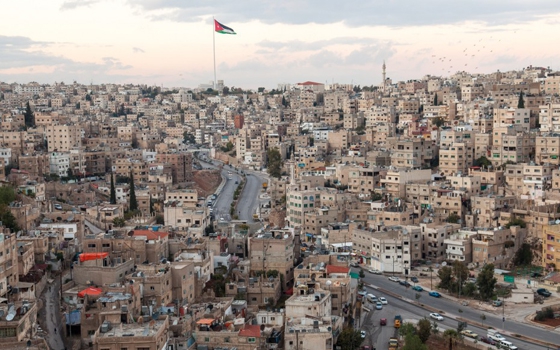Although recently faced with lower activity, increased economic growth and new projects coming on-line could see demand rise in Jordan’s property market.
State of the market
Jordan’s real estate sector saw a 6% year-on-year (y-o-y) decline in trading values to JD3.2bn ($4.5bn) in the first half of the year, according to data issued by the Department of Lands and Survey (DLS) cited in local media.
This comes on the back of a 2% y-o-y contraction in real estate sales last year, which saw a total annual turnover of JD7.61bn ($10.7bn).
In June, in a bid to simulate the country’s real estate market, the government cut the fees collected on property sales from 5% to 2.5% and reduced the sales tax on real estate transactions by half to 2%. This followed on a halving of fees from 10% to 5% in the previous year.
However, in late July Omar Malhas, minister of finance, announced that the reductions implemented the previous month had been cancelled after the measures failed to increase sales, with real estate activity falling 9% y-o-y in the month in which the tax cuts were in place.
Cautionary factor
Despite this, Jordanians continue to purchase property; however, many families are investing in smaller residential units of 100 sq meters or less, primarily due to cost concerns.
In Amman the cost of residential real estate is approximately $1500 per sq meter. Rental rates are also high in the capital, in part due to the influx of refugees into the country, according to industry media reports.
“Jordanians are extremely price sensitive,” Nasser Al Khaldi, CEO for Samarah Dead Sea Resort, told OBG. “In the current environment, they aren’t looking for size, but rather from the point of view of what provides the best value.”
The increase in demand for smaller units is not only due to more competitive pricing, but also recent tax incentives.
Last July the government announced it would waive registration fees on the first 150 sq meters of any home less than 180 sq meters. The incentive package also included the halving of the registration fees on any size of property to 5%.
As a result, the DLS reported that government revenue from real estate sales declined 11% to JD377m ($531m) last year, with the value of exemptions increasing by 47% to JD120m ($12.3m).
In the first half of 2016, revenues were down by 10% y-o-y to JD164.3m ($230m), suggesting that state levies may fall short of the amount generated last year.
Breakout tipped for next year
Though sales may be down this year, a rebound in the market could be fueled by an expected rise in economic activity.
The IMF has predicted Jordan’s economy will start to gradually gain pace over the next three years, with GDP growth predicted to reach 2.8% this year and increasing to 4% by 2019, momentum that could boost property sales.
Demand in the Amman market – where 42% of the country’s population of 9.5m reside, and 72% of the country’s real estate trade takes place – could also stimulate growth.
There should be a gradual unlocking of the residential market next year, according to Omar Zghayer, CEO of real estate developer Akoya Properties, who predicts an increase in investment in the coming year.
“The market will perform better in 2017 because several real estate projects will be done by then,” he told OBG. “There is more demand than supply for residential units in Amman.”
Part of this demand will be met by projects like Tanamee Real Estate Development Company’s 204,000-sq-metre Jenan Amman, an integrated suburb located near the airport road. Upon completion of the three scheduled phases, the JD100m ($140.6m) development will contain some 500 villas, as well as student dormitories, apartments and approximately 65 stores.
Meanwhile, Al Seraje Real Estate Development, a subsidiary of the Audeh Group, will be launching its residences in the first quarter of next year as part of its Campbell Gray Living development project, which will also include a 5-star hotel, offices, and cafes and restaurants upon completion in 2018.
Oxford Business Group
4 November

























































